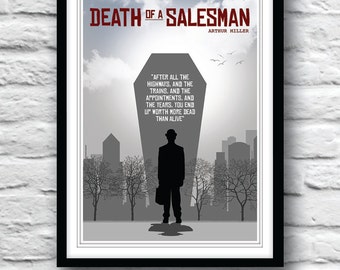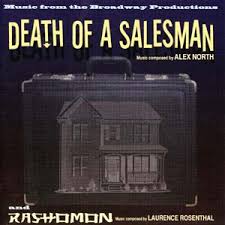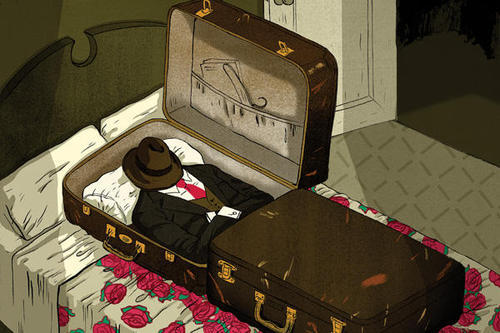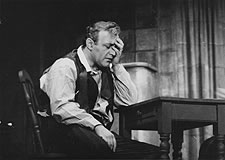This link will take you to a number of sources:
http://scholar.google.com/scholar?q=battle+royal+ralph+ellison&btnG=&hl=en&as_sdt=0%2C31
This link also has a few sources:
http://www.literaryhistory.com/20thC/Ellison.htm
Here are some sources that discuss the American Dream and African Americans:
http://www.alternet.org/story/70694/the_american_dream%2C_or_a_nightmare_for_black_America
http://www.tnj.com/news/black-american/no-american-dream-african-americans
http://theafricanamdream.weebly.com/
http://www.eurweb.com/2011/12/african-americans-the-american-dream-is-do-it-yourself/
English 215 Summer II 2015
Wednesday, August 5, 2015
A Perfect Day for Bananafish
Sources on the story:
http://books.google.com/books?hl=en&lr=&id=vMClokiW1jYC&oi=fnd&pg=PA68&dq=a+perfect+day+for+bananafish&ots=YkZNam8NP0&sig=_eaj-3zSCIJyGTIsQpGtEcAwKKI#v=onepage&q=a%20perfect%20day%20for%20bananafish&f=false
http://www.jstor.org/discover/10.2307/373294?uid=3739808&uid=2&uid=4&uid=3739256&sid=21104462092887
Go to page 9 on this article:
http://skemman.is/stream/get/1946/11320/27966/1/Da%C3%B0i_Gu%C3%B0j%C3%B3nsson_-_BA.pdf
https://digarchive.library.vcu.edu/bitstream/handle/10156/4566/Spratley_Warren_MA.pdf?sequence=3
You can also use the school's online article database:
http://www.valenj.org/
PTSD Sources:
http://www.ptsd.va.gov/
http://www.ncbi.nlm.nih.gov/pubmedhealth/PMH0001923/
http://www.nimh.nih.gov/health/topics/post-traumatic-stress-disorder-ptsd/index.shtml



http://books.google.com/books?hl=en&lr=&id=vMClokiW1jYC&oi=fnd&pg=PA68&dq=a+perfect+day+for+bananafish&ots=YkZNam8NP0&sig=_eaj-3zSCIJyGTIsQpGtEcAwKKI#v=onepage&q=a%20perfect%20day%20for%20bananafish&f=false
http://www.jstor.org/discover/10.2307/373294?uid=3739808&uid=2&uid=4&uid=3739256&sid=21104462092887
Go to page 9 on this article:
http://skemman.is/stream/get/1946/11320/27966/1/Da%C3%B0i_Gu%C3%B0j%C3%B3nsson_-_BA.pdf
https://digarchive.library.vcu.edu/bitstream/handle/10156/4566/Spratley_Warren_MA.pdf?sequence=3
You can also use the school's online article database:
http://www.valenj.org/
PTSD Sources:
http://www.ptsd.va.gov/
http://www.ncbi.nlm.nih.gov/pubmedhealth/PMH0001923/
http://www.nimh.nih.gov/health/topics/post-traumatic-stress-disorder-ptsd/index.shtml

Thursday, July 30, 2015
In Class Notes
What is a family?
o Intergenerational pain relating to
and expectations between family members.
o What is hidden behind the picket
fence?
o They relate to each other through
their ideals.
o This is a dysfunctional family
desperately trying to not be.
o No one is quite sure who they are in
the family.
o The sons try so hard to please him in
hope of getting approval and live but hate him because they see that as they
only way to get approval.
The death of the dream
that any man can achieve anything.
·
Willy
is the anti-Gatsby.
·
Gatsby
becomes everything America represents: self-made, rich, from a poor background,
upward mobility.
·
Willy
is stuck in the middle class. He never gets to achieve what he was told is achievable
by living the life he led. Acknowledging failure.
·
Willy was well
liked in his profession and now that is taken away.
·
We never get a
real sense of who he was. Everything is so blurred between real and fantasy.
Fear of change.
·
The house in a
changing landscape. The house as symbolic of life in America. The world is
literally changing around him.
Old play with modern
worries.
o Romans also wrote this worry. There was concern with
how the family and society will be washed away by changing times.
o The salesman as the oldest profession.
o How does the aging man bow out of his role as provider
and leader?
Coming
to terms with being obsolete. The fantasy that lived beneath their function.
And when you take his functionality all that is left is the dream. Which is not
real.
Linda as a character.
Biff is older 34 and is on
a downside. Father hold out hope for him. Disenchanted. Silly adores him but
also thinks he's lazy. Is nothing because he doesn't have the American Dream.
Happy is more coming of
age. More like Linda and want Willy's approval.
More Death of A Salesman
https://books.google.com/books?hl=en&lr=&id=p_LLoI1OnEEC&oi=fnd&pg=PA25&dq=American+Dream+and+death+of+a+salesman+&ots=l7T4kQv0cC&sig=I1IizlWueKD6cUUAPV5mrA5leYU#v=onepage&q=American%20Dream%20and%20death%20of%20a%20salesman&f=false
https://books.google.com/books?hl=en&lr=&id=sjc5TdesY1YC&oi=fnd&pg=PA156&dq=American+Dream+and+death+of+a+salesman+&ots=Z8S4hr8ffR&sig=gYFkkeygFYvmiYq52cwkTBRqBLQ#v=onepage&q=American%20Dream%20and%20death%20of%20a%20salesman&f=false
https://books.google.com/books?id=JL1Z38jBGVAC&pg=PA55&dq=American+Dream+and+death+of+a+salesman&hl=en&sa=X&ved=0CDgQ6AEwA2oVChMIxYatt5SDxwIVBck-Ch2JlwO0#v=onepage&q=American%20Dream%20and%20death%20of%20a%20salesman&f=false
https://www.nytimes.com/books/00/11/12/specials/miller-salesman49.html
http://www.theguardian.com/stage/1949/jul/30/theatre.artsfeatures
http://www.economist.com/node/21550237
http://utmost.org/the-teaching-of-disillusionment/




https://books.google.com/books?hl=en&lr=&id=sjc5TdesY1YC&oi=fnd&pg=PA156&dq=American+Dream+and+death+of+a+salesman+&ots=Z8S4hr8ffR&sig=gYFkkeygFYvmiYq52cwkTBRqBLQ#v=onepage&q=American%20Dream%20and%20death%20of%20a%20salesman&f=false
https://books.google.com/books?id=JL1Z38jBGVAC&pg=PA55&dq=American+Dream+and+death+of+a+salesman&hl=en&sa=X&ved=0CDgQ6AEwA2oVChMIxYatt5SDxwIVBck-Ch2JlwO0#v=onepage&q=American%20Dream%20and%20death%20of%20a%20salesman&f=false
https://www.nytimes.com/books/00/11/12/specials/miller-salesman49.html
http://www.theguardian.com/stage/1949/jul/30/theatre.artsfeatures
http://www.economist.com/node/21550237
http://utmost.org/the-teaching-of-disillusionment/



Thursday, July 23, 2015
NO CLASS MON 7/27 OR TUES 7/28--READ ACT ONE OF DEATH OF A SALESMAN
NO CLASS MON 7/27 OR TUES 7/28--READ ACT ONE OF DEATH OF A SALESMAN
This link provides a number of links from the NY Times on the play:
http://learning.blogs.nytimes.com/2012/02/16/teaching-death-of-a-salesman-with-the-new-york-times/
Death of a Salesman (1949) Death of a Salesman relates the story of Willy Loman, a down-on-his-luck traveling salesman. In order to cope with his failures in life, he retreats to the past in his mind and seems to be losing touch with reality. He tries to relive the good times, but keeps coming up against things that went wrong. His family try to help him by lying about their prospects, but when Loman loses his job, after a lifetime with the same company, he becomes desperate. His depression is exacerbated by the guilt he feels from a past infidelity which has estranged him from his older son, Biff. Rather than accept that his life has been a failure, and that Biff is not interested in big business, Loman decides to commit suicide in hopes that the insurance money will help Biff become successful. The play ends with his family and only friend, Charley, grieving by his graveside.
Here is a really long look at Death of A Salesman:
http://www.ibiblio.org/miller/DeathofaSalesmanMAThesis2004.pdf
Symbolism in Death of A Salesman:
http://www.ibiblio.org/miller/gardens.html


This link provides a number of links from the NY Times on the play:
http://learning.blogs.nytimes.com/2012/02/16/teaching-death-of-a-salesman-with-the-new-york-times/
Death of a Salesman (1949) Death of a Salesman relates the story of Willy Loman, a down-on-his-luck traveling salesman. In order to cope with his failures in life, he retreats to the past in his mind and seems to be losing touch with reality. He tries to relive the good times, but keeps coming up against things that went wrong. His family try to help him by lying about their prospects, but when Loman loses his job, after a lifetime with the same company, he becomes desperate. His depression is exacerbated by the guilt he feels from a past infidelity which has estranged him from his older son, Biff. Rather than accept that his life has been a failure, and that Biff is not interested in big business, Loman decides to commit suicide in hopes that the insurance money will help Biff become successful. The play ends with his family and only friend, Charley, grieving by his graveside.
Here is a really long look at Death of A Salesman:
http://www.ibiblio.org/miller/DeathofaSalesmanMAThesis2004.pdf
Symbolism in Death of A Salesman:
http://www.ibiblio.org/miller/gardens.html


Monday, July 20, 2015
Essay 1 Assignment
3 PAGES, DOUBLE SPACED, SIZE 12 TIMES NEW ROMAN
USE TWO
OUTSIDE SOURCES (NOT INCLUDING THE TEXT!) AND QUOTE THE PRIMARY TEXTS AS WELL.
USE THE EXAMPLE PAPER HANDOUT FOR MLA GUIDELINES!!
This link will also help with MLA questions:
owl.english.purdue.edu/owl/resource/747/01
Refer to the class blog for outside source info: eng215summer2.blogspot.com
Use
direct quotes from the texts along with outside sources to support your thesis.
- Illusion vs. reality is something that comes up in a lot of
literature. We saw some in The Great
Gatsby. Pick one aspect of a character’s life, whether it be from the
past or the present, and explain how he/she uses illusions to distort
their reality
- Pick one or
two of the many symbols from the novel and describe what it is important. What
does this symbol mean in to this particular text? Use examples from the
texts along with outside sources to support your thesis.
- How does Gatsby represent the American dream? What does the novel
have to say about the condition of the American dream in the 1920s? In
what ways do the themes of dreams, wealth, and time relate to each other
in the novel’s exploration of the idea of America?
4.
Is Nick a reliable narrator? We do not have much
choice but to believe what he says throughout the novel so decide if he is and
prove your point.
5.
Compare and contrast Gatsby and Tom OR compare Gatsby to Charlie from
Babylon Revisited.” How are they alike? How are they different? Given the
extremely negative light in which Tom is portrayed throughout the novel, why
might Daisy choose to remain with him instead of leaving him for Gatsby?
6.
We looked at the handout from The
Saturday Evening Post about Fitzgerald and in it he said ““There
are no second acts in American lives.” How do we see this in “Babylon Revisited”
and The Great Gatsby?
7.
What is the role of race in The Great Gatsby? It is not a huge issue in the novel but there are
certainly a few hints in there. Use those few examples to give a clearer idea
of what role race may have played in society at the time of the novel.
- Your introduction should include:
1)
Title and authors of primary (stories we have read in class) texts
2)
Your thesis (Which depends on the question you write about from
above)
- Never end a paragraph
with a quote.
- Cite outside sources
within in your text; if it appears on your works cited page it has to be
used in the paper (direct quotes or paraphrasing).
- Always keep in mind: is
this quote proving and supporting my thesis? If not, do not use it!
- WITHOUT A WORKS CITED
PAGE OR OUTSIDE SOURCES THE PAPER WILL FAIL
Wednesday, July 15, 2015
More on The Great Gatsby
This link discusses some random facts about the novel and the writer:
http://gothamist.com/2013/05/07/gatsby_facts.php
The Wire breaks down The Great Gatsby (There is some strong language here):
http://www.openculture.com/2012/08/ithe_wirei_breaks_down_ithe_great_gatsbyi_f_scott_fitzgeralds_classic_criticism_of_america_nsfw.html
Footage of Fitzgerald and his wife Zelda:
http://www.openculture.com/2012/11/rare_footage_of_scott_and_zelda_fitzgerald_from_the_1920s.html
http://query.nytimes.com/search/sitesearch/?action=click&contentCollection®ion=TopBar&WT.nav=searchWidget&module=SearchSubmit&pgtype=Homepage#/THE GREAT GATSBY
http://scholar.google.com/scholar?hl=en&q=the%20great%20gatsby
Race and The Great Gatsby:
http://www.theatlantic.com/health/archive/2013/06/rise-of-the-colored-empires/276844/
https://www.uscupstate.edu/uploadedFiles/Academics/Undergraduate_Research/Reseach_Journal/006_ARTICLE5_2009.pdf
http://flavorwire.com/391193/the-complicated-and-troubling-role-of-race-and-class-in-baz-luhrmanns-Gatsby
https://www.timeshighereducation.co.uk/news/why-i-believe-that-jay-gatsby-was-black/153166.article
http://gothamist.com/2013/05/07/gatsby_facts.php
The Wire breaks down The Great Gatsby (There is some strong language here):
http://www.openculture.com/2012/08/ithe_wirei_breaks_down_ithe_great_gatsbyi_f_scott_fitzgeralds_classic_criticism_of_america_nsfw.html
Footage of Fitzgerald and his wife Zelda:
http://www.openculture.com/2012/11/rare_footage_of_scott_and_zelda_fitzgerald_from_the_1920s.html
http://query.nytimes.com/search/sitesearch/?action=click&contentCollection®ion=TopBar&WT.nav=searchWidget&module=SearchSubmit&pgtype=Homepage#/THE GREAT GATSBY
http://scholar.google.com/scholar?hl=en&q=the%20great%20gatsby
Race and The Great Gatsby:
http://www.theatlantic.com/health/archive/2013/06/rise-of-the-colored-empires/276844/
https://www.uscupstate.edu/uploadedFiles/Academics/Undergraduate_Research/Reseach_Journal/006_ARTICLE5_2009.pdf
http://flavorwire.com/391193/the-complicated-and-troubling-role-of-race-and-class-in-baz-luhrmanns-Gatsby
https://www.timeshighereducation.co.uk/news/why-i-believe-that-jay-gatsby-was-black/153166.article
Subscribe to:
Posts (Atom)